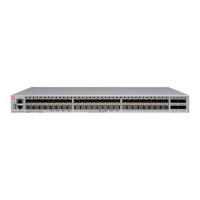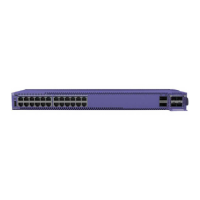Table 60: List of Stacking Terms (continued)
Term Description
Data ports The set of ports on a stackable switch that are available for connection to your
data networks. Such ports can be members of a user-configured VLAN or trunk
group. They can be used for Layer 2 and 3 forwarding of user data trac, for
mirroring, or other features you can configure. Data ports are dierent from
stacking ports.
Failover The process of changing the backup node to the master node when the original
master node has failed.
When a master node fails, if a backup node is present, and if that node has
completed its initial synchronization with the master node, then the backup node
assumes the role of master node. The standby nodes continue their operation and
their data ports do not fail.
Hitless failover A failover in which all data ports in the stack, except those of the failing master
node, continue normal operation when the master node fails.
Node address The unique MAC address that is factory-assigned to each node.
Node role election The process that determines the role for each node. The election takes place
during initial stack startup and elects one master node and one backup node. An
election also takes place after a master node failover, when a new backup node is
elected from the remaining standby nodes.
Node role election priority A priority assigned to each node, to be used in node role election. The node with
the highest node role election priority during a role election becomes the master
node. The node with the second highest node role election priority becomes the
backup.
Operational node A node that has achieved operational state as a card in a slot. The operational state
can be displayed using the show slot {slot {detail} |
detail }command.
System uptime The amount of time that has passed since the last node role election. You can
display the system uptime by entering the show switch {detail }
command on the master node.
Stack segment A collection of nodes that form a stack topology. The term is useful when a stack is
severed. Each severed portion of the stack is referred to as a stack segment.
Stack state A state assigned by the stack to a node. You can display the stack state by
entering the show stacking command.
Easy Setup A procedure that automatically configures the essential stacking parameters on
every node for initial stack deployment, and then automatically reboots the stack
to put the parameters into eect.
The choice to run Easy Setup is oered when you run the enable stacking
{node-address node-address} command and the essential stacking
parameters are unconfigured or inconsistent. It can also be invoked directly by
running the configure stacking easy-setup command.
Planning to Create Your Stack
Use the information in the following topics to plan the physical makeup of your stack – switches,
versatile interface modules (VIMs), and cables – and the stacking protocols you will use. Included are:
•
Guidelines and other information for each switch model in your stack
Building Stacks
ExtremeSwitching and Summit Switches: Hardware Installation Guide 148

